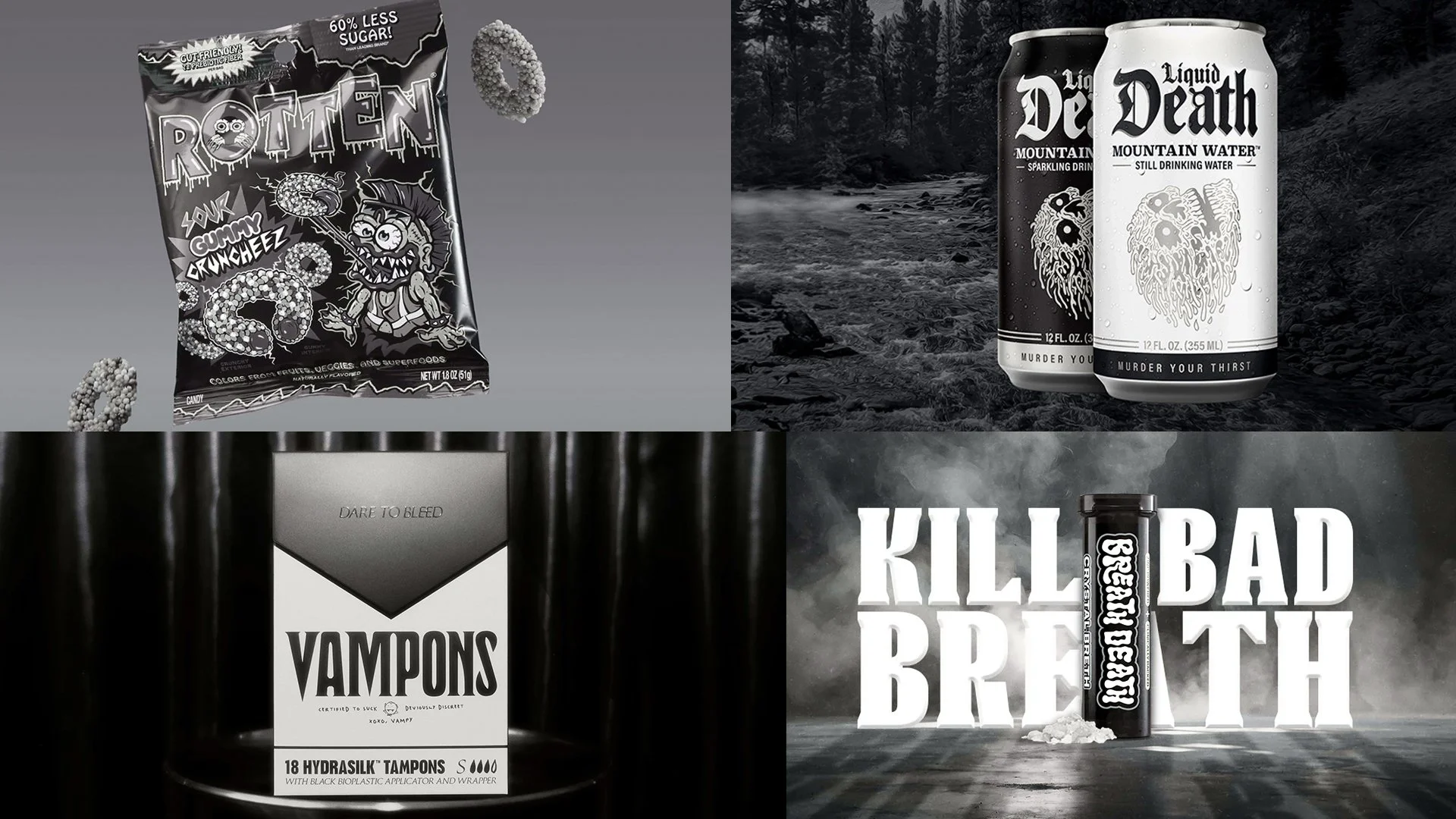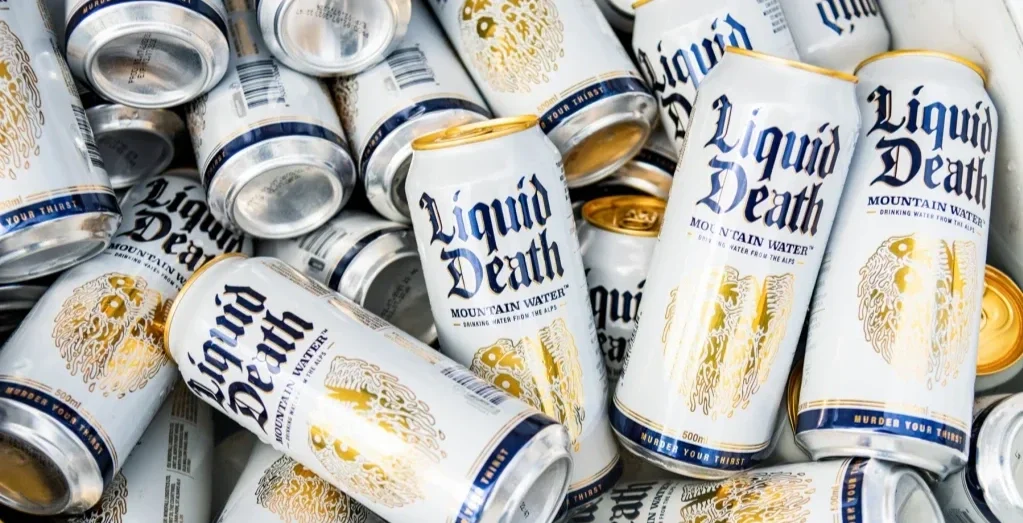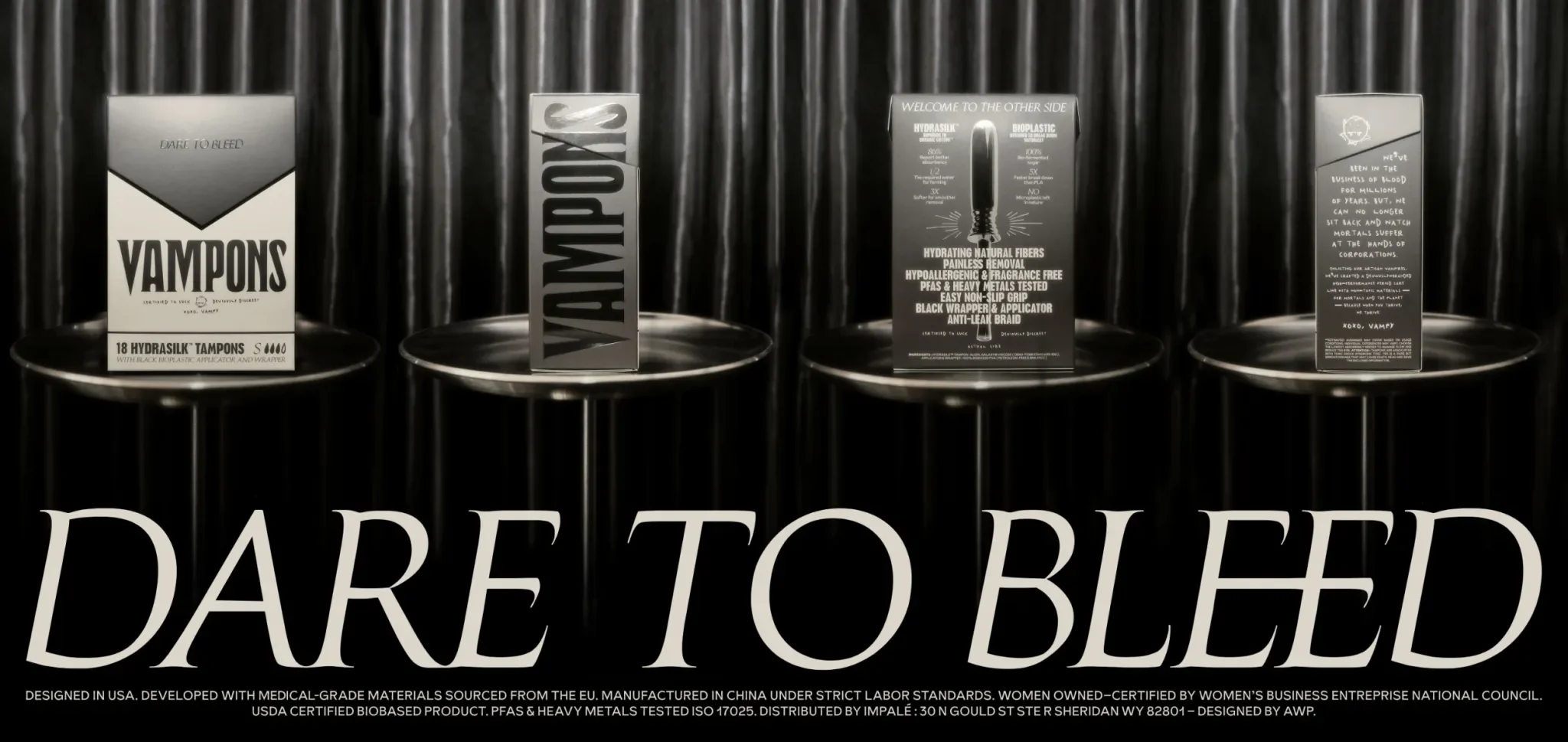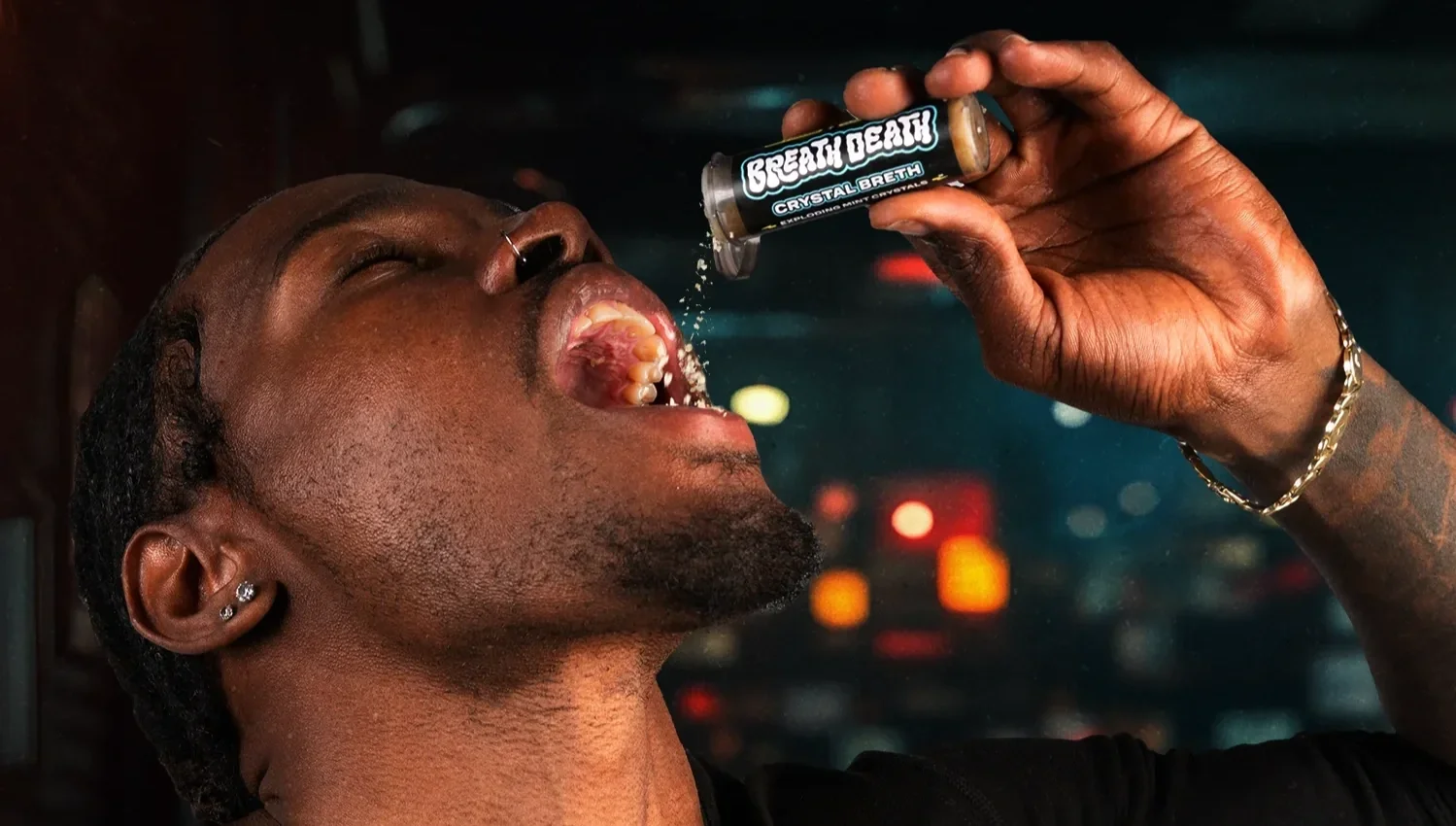When Health Gets Dangerous
A new wave of wellness brands are trading clean minimalism for dark humor, death references and identity-driven storytelling; and it’s working.
By Nadia Khabbaz, Brand Strategist & Creative Director
Published Oct. 01, 2025
For the past decade, wellness branding has followed a familiar formula: soft gradients, leafy logos, pale beige and sage green. Words like clean, gentle, pure and natural dominate. And for a while, that worked. But now?
It’s feeling a little… lifeless.
We’re seeing a different kind of brand move into the spotlight, and they’re not whispering wellness. They’re yelling it, bleeding it, parodying it. They’re edgy, loud and unapologetically disruptive. And they’re doing something smart: they’re building health-forward products with cultural identity baked in.
From vampire-inspired period care (yes, it’s called Vampons) to Rotten candy to Breath Death mints, these brands are flipping every wellness cliché on its head. And while they’re all playing in different categories, they share one common ancestor:
Liquid Death.
Liquid Death bottles rebellion and labels it as water.
Liquid Death entered a saturated market with a healthy product, spring water in a tallboy aluminum can, but wrapped it in an aesthetic typically reserved for energy drinks, punk bands, DIY zines and doom metal. The voice was aggressive. The branding was sharp. And it worked because it broke every rule.
No wellness speak. No nature shots. No purity promises.
Instead, they built a brand that felt like entertainment, one that led with attitude and not product claims.
And their mission? Death to Plastic.
Which means beyond selling water, they sold sustainability wrapped in chaos.
Today, they’re worth hundreds of millions and stocked everywhere from Whole Foods to Live Nation shows. Why? Because they created a brand people wear. Share. Meme. Tattoo.
It’s a lifestyle brand with a body count.
What’s actually happening here?
There’s a new brand strategy model forming, and I’ve been calling it The Death Care Aesthetic.
This is where health-conscious products shed the soft, sterile tropes of “clean” and instead wrap themselves in subversive visuals, deadpan humor and unapologetic storytelling. These brands don’t cleanse quietly. They perform. They dare. They confront.
It’s health rebranded as attitude. Purity with bite. Wellness, but make it cinematic.
And it’s a direct response to the oversaturated calm that’s defined the wellness category for the past decade. These brands are building tension on purpose and they’re owning every inch of shelf space they take up.
Let’s break it down:
1. Vampons: Daring to Bleed
Vampons isn’t just a clever name, it’s a full creative provocation. Designed by AWP’s, the vampire-inspired branding leans all the way into darkness, power and myth. From the heavy black-and-white gothic visuals, to the gungey cinematic packaging to slogans like “DARE TO BLEED,” everything about this brand is unapologetic.
This isn’t edge for edge’s sake. It’s a design-led statement that reclaims shame and flips the narrative. Fierce. Primal. Reverent.
It doesn’t ask for permission. It demands to be seen.
2. Rotten candy? Yes, please.
Rotten is a new candy brand that celebrates indulgence instead of shaming it. While other “better-for-you” sweets wrap themselves in wholesome language, Rotten goes full villain. The branding looks like something from a Halloween rave, but the ingredients? Low-sugar, vegan, clean label.
They know their audience wants fun as much as they want function. And they’re not afraid to be the bad kid in the wellness aisle.
3. Breath Death: Pop Rocks for Your Mouth (But Make It Fresh)
Breath Death isn’t playing in the breath mint space, it’s straight-up inventing a new category. Mints? No. These are pop rocks for your mouth. But instead of artificial blue raspberry chaos, you’re getting all-natural ingredients and actual breath-cleansing function… in a format that feels vaguely illegal and wildly satisfying.
Their flagship product, Crystal Breath, comes in a sleek little vial that looks more afterparty than oral care. One crackle on your tongue and it’s over, for your bad breath and your expectations of what a mint should be.
Breath Death doesn’t just kill bad breath, it buries the entire mint category.
While everyone else is whispering “cool mint,” this brand is throwing a rave in your mouth.
Brand strategy behind the edge
These brands are being intentional with their loudness. Instead of soft, clean and neutral, they’re going bold, theatrical and culturally charged. Wellness is becoming more about what’s added: story, identity and point of view.
They flip the formula: minimal becomes maximal, natural becomes narrative and function becomes culture. What makes this exciting is that with branding innovation came product innovation too. These are products reformulated, reimagined and designed to provoke.
Voice becomes the moat. Aesthetic becomes the ad. And the product? It becomes the badge.
So, was Liquid Death the first?
Not exactly. But it was the brand that proved this model could scale.
They made space in the health world for storytelling that’s loud, authentic, self-aware and profitable. And now other categories, from femcare to candy to mints, are following that path, adding their own twist.
What this means if you build brands
If you’re a strategist, creative director or founder working in CPG, food, beauty, health or wellness, consider this as an open door to something bigger.
Consumers are tired of beige. They’re craving brands that feel human. Real. Entertaining. Relatable.
So ask yourself:
• What’s the default visual or tone in your category?
• What would it look like to break that, on purpose?
• Can your brand carry a narrative bigger than your benefits?
• Can your product invite people into an identity?
The brands that win next won’t play it safe.
They’ll be clear about who they are, even if that means scaring a few people off.
Disclaimer: All images featured in this article are used for visual reference only. I do not claim ownership of any image rights.





